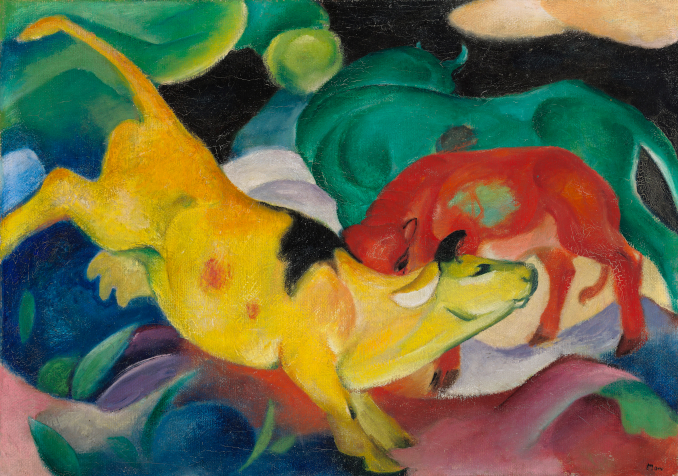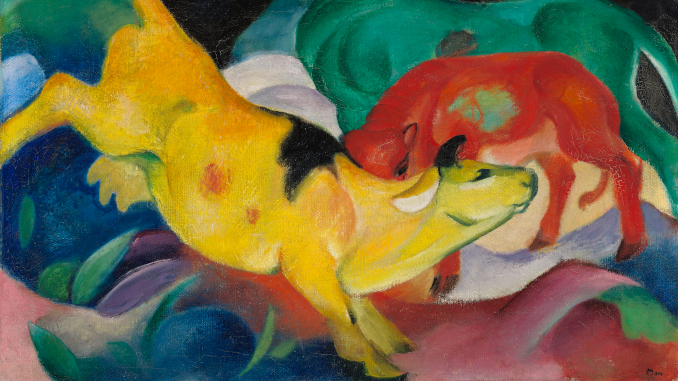
Lenbachhaus, Munich. Photo: Tate Modern
By Nina Heyn – Your Culture Scout
When we think of German Expressionism, the images that most readily come to mind are often the black and white lithographs of Berlin artists like Käthe Kollwitz or Erich Heckel, but in fact this art movement also encompassed paintings brimming with color brighter than anything that German art had seen before the early 1900s. Whereas Berlin, at that time, was a center of more somber, politically engaged, anti-establishment art, Munich was considered Germany’s art capital, where the new styles of Impressionism, Cubism, and Fauvism were studied. In 1896, a new art student arrived in Munich. Wassily Kandinsky was a 30-year old Russian lawyer who, a bit like Gauguin, decided in the prime of life that he wanted a radical change and became a painter. He spent 18 years in Munich, returning to Russia only after being expelled from Germany at the outbreak of WWI.

